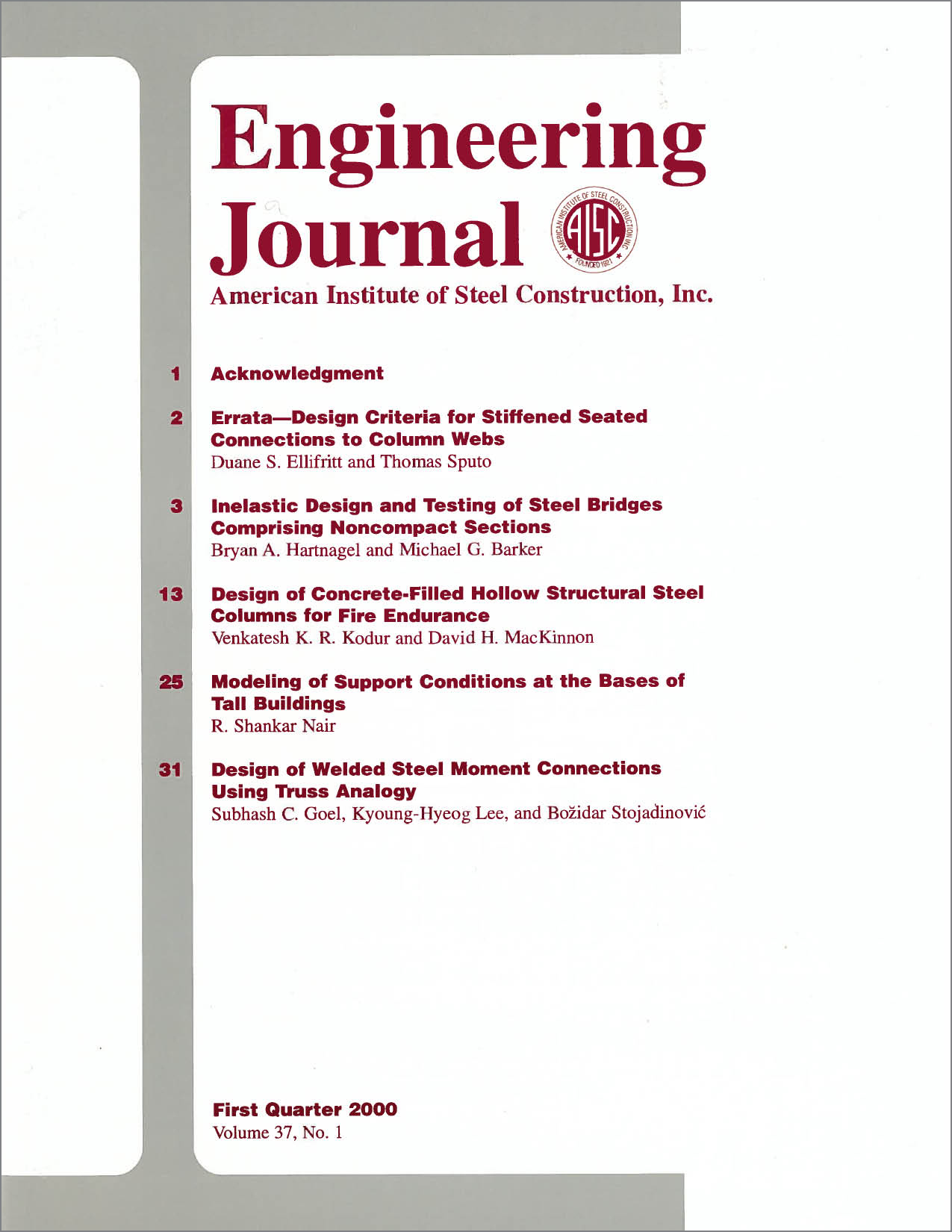Design of Welded Steel Moment Connections Using Truss Analogy
DOI:
https://doi.org/10.62913/engj.v37i1.731Abstract
A new design procedure for fully-restrained welded beamto- column moment connections is presented in this paper. This procedure is based on truss analogy approach developed by the authors (Goel, Stojadinovic, and Lee 1996 and 1997). The truss analogy approach accounts for boundary effects occurring in the connection because the configuration of the connection restrains the deformation of the connected elements (Lee, Goel, and Stojadinovic, 1997). The resulting stress distribution, or "load path" can be modeled using a truss. The diagonals of the truss model represent the resultants of normal and shear stresses in the web of the beam that go through the regions near the beam flange welds. A new connection design is also presented in this paper. This connection configuration is designed by following the load path model using truss analogy. The idea behind the new connection design is to indirectly connect the beam to the column. The connection elements are to be placed near the top and bottom flanges of the beam to handle the forces in the truss chords and diagonals. Each flange connection comprises a horizontal flange plate and a set of vertical ribs designed to transfer the force in the truss members. The middle portion of the beam web need not be connected to the column except for field erection purposes because it is virtually stress-free. The combination of the new design procedure and new connection design is intended to ensure adequate ductility of the moment-resisting frame. To achieve this, it is desirable that plastic hinges form in the beams at a safe distance away from the beam-to-column connections.

